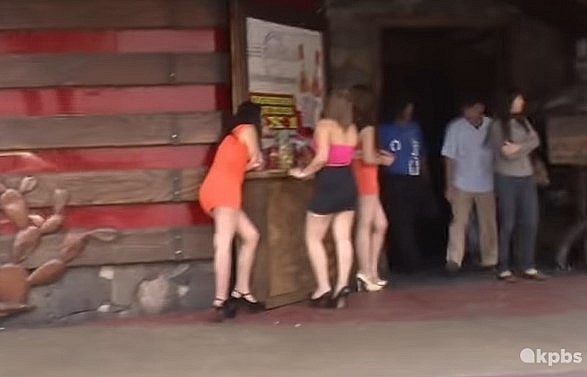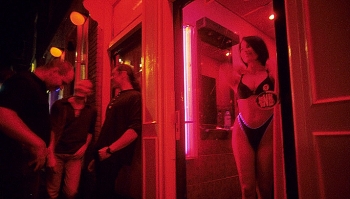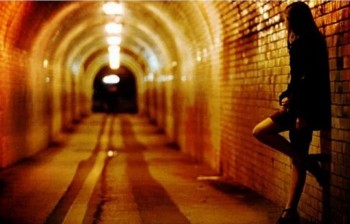Where Prostitution is Legal in Mexico?
 |
| Prostitution in Mexico |
Is Prostitution Legal in Mexico?
Federal law in Mexico permits prostitution. Each of the 31 states in the nation has its own laws pertaining to prostitution, and 13 of them both permit and control it. There are "tolerance zones" in some cities that function as red-light districts and permit prostitution under certain restrictions. Pimping is prohibited in the majority of Mexico.
On May 21, 2019, Mexico City officially decriminalized sex work. Prior to that, engaging in street sex work was regarded as a minor infraction that could result in an arrest or fine.
If a number of neighbors complained to the police, they could request that the workers be taken off the streets and appear before a judge. These days, the only parts of sexual labor that are illegal are procuring and sex trafficking. The first offense penalizes individuals who profit from the prostitution of others without considering the voluntariness of the act. The second offense is distinct because, in theory, it only covers forced prostitution—that is, situations in which a victim has been coerced, coerced, threatened, or coerced by someone abusing their position of authority or exploiting their vulnerability.
There is a red zone, or zona roja, in every major city where prostitution is legal.
Prostitution is not permitted in public areas, including on public property, buses, or subways. On private property, it is only permitted with the owner's consent.
Prostitutes must register, pay for, and receive weekly health checks; they also need to carry a health card as identification.
A more comprehensive description of the legal circumstances is accessible. Although 18 is the legal age of consent, most things in Mexico are not governed by the law.
The proportion of estimated working prostitutes:
• On the streets: 48%
• At bars: 38%
• At bordellos: 14%
The Penalties and Enforcement Methods for Prostitution in Mexico
Selling sex is not regarded as a legitimate profession, even though it is not a crime. Because of this, sex workers in Mexico are frequently the targets of abuse and exploitation at work and lack legal rights and protections. The fact that every one of Mexico's 31 states has its own laws pertaining to prostitution adds to the complexity of the situation. There are states that have laws in place that designate particular areas for the sale of sex services, and there are states that do not.
While prostitution is not illegal in and of itself, there are certain related activities that are. Among them are:
• Pimping (promoting or facilitating prostitution)
• Sex trafficking
• Forcing someone into prostitution
• Child prostitution
• Soliciting sex on public streets
Depending on how serious the offense was, there may be jail time or fines associated with it. Even though prostitution is not illegal in and of itself, sex workers may face penalties if they approach potential clients in public areas. Furthermore, because there are no clear laws protecting the rights of sex workers, they may be subjected to abuse, extortion, and harassment by the police.
| According to Rosa Marta Cortina de Brown of the Female Association of Tourist Enterprise Executive, "sexual tourism" has resulted in the sexual exploitation of approximately 250,000 children aged between 10 and 16 in locations such as Guadalajara, Cancun, Acapulco, Puerto Vallarta, and Tijuana. Reports about child prostitution in Ciudad Juarez, Queretaro, and Veracruz have also surfaced recently. Girls who work as prostitutes are constantly at risk for pregnancy, early childbirth, assault, drug and alcohol addiction, and STDs like HIV/AIDS. |
How is prostitution referred to locally in Mexico?
Prostitution is known as trabajo sexual (sexual work) or la vida galante (the gallant life) in Mexico. Sex workers are frequently referred to as sexoservidoras (sex servers) or trabajadoras sexuales (sexual workers). While it is also used, the term prostituta (prostitute) may have a more negative meaning.
History of Prostitution in Mexico
In Mexico, prostitution was first legalized in the 1860s during the French occupation. These laws, which included registering as a prostitute and going through routine medical examinations, were put in place to prevent sexually transmitted infections (STIs), especially syphilis and gonorrhea, which were becoming more and more common among European soldiers.
Porfirio Díaz's authoritarian regime in the late 1800s imposed regulations on prostitutes, including monthly quotas, medical examinations, and photographic documentation. The Porfiriato, where 15 to 30 percent of Mexico City's young female workforce was employed in the sex trade at the time, was primarily driven by economic concerns.
Due to severe disruptions in supplies to the cities during the Mexican Revolution, many women turned to prostitution as a means of subsistence between 1913 and 1915. Many poor women in the cities turned to prostitution during the 1920s and 1930s post-war period of reconstruction and consolidation. Prostitution was outlawed in 1940 as a result of Lázaro Cárdenas' revolutionary political and social reforms.
El Paso's location provided a convenient environment for prostitution to flourish, despite moral pressure from the United States and the widespread changes that continued prostitution after World War I. After prostitution was outlawed, Americans were able to quickly and easily access El Paso due to its close proximity to the US border. An increase in the number of Mexican women engaged in this type of work was caused by the railroad's ability to transport people from the United States to Mexico and the lucrative nature of prostitution. Regulations grew in tandem with the rise in prostitution.
In the 1930s, local brothels and vaudeville theaters in translocal border cities like Mexicali, Baja California, became gathering places for American tourists, Asian laborers, and Mexican-American sex workers.
Furthermore, sex workers had clients outside of American sex tourists who traveled specifically for sex. Agricultural laborers made up a sizable portion of the clientele close to the border. Some women would travel across fields to provide labor services while residing in mobile homes. Many of these young men would specifically request younger women, stating that they were between the ages of 15 and 35, and they would pay less for any woman who was older than that.
American men constitute a sizable portion of the clientele for sex workers in border cities, particularly in Ciudad Juárez and Tijuana, in the mid-2000s; over two-thirds of the female sex workers in these two cities reported having at least one male client in the previous two months.
But relationships between sex workers didn't just start and end in Mexican brothels. Many women who were judged sufficiently young and attractive by American visitors would be offered the chance to travel across state lines and return to the United States with the men for a few years.
Some have argued that the neoliberal reforms implemented during Carlos Salinas de Gortari's PRI administration in the 1990s, including the 1994 signing of NAFTA, fostered unfavorable economic conditions that drove indigenous women from southern Mexico to northern border regions in search of employment in maquiladoras or the sex trade.
Where can I find helpful links, government laws, and resources related to prostitution legality in Mexico?
For more information on prostitution legality in Mexico, you can refer to the following resources:
Instituto Nacional de las Mujeres (National Institute of Women) – A government agency dedicated to promoting gender equality and women’s rights in Mexico.
The National Council to Prevent Discrimination, or Consejo Nacional para Prevenir la Discriminación, is a group that aims to stop discrimination in Mexico, particularly that which targets sex workers.
Secretaría de Gobernación (Secretariat of the Interior) – The government department responsible for overseeing public security, including efforts to combat sex trafficking.
The Network of Sexual Workers in Latin America and the Caribbean, or Red de Trabajadoras Sexuales de Latinoamérica y el Caribe, a local group that supports the legal rights of prostitutes.
The Red Light Districts in Mexico City
One of the greatest spots in Latin America to have fun with laid-back, passionate, and incredibly attractive Latina girls is the capital of Mexico. In actuality, this city serves as a major draw for sex workers from throughout Mexico and the surrounding nations.
Naturally, the red light districts are among the most well-liked locations in CDMX for meeting girls.
La Merced Market
Adjacent to the historic center, La Merced is the city's largest market. Additionally, there's an unusually wide pedestrian walkway beside the main road on the western edge of the market (you can easily find it by looking for that distinctive green fence along the road, or just refer to the map at the end of the guide).
Numerous attractive women can be seen loitering along this walkway, sitting, standing, or strolling aimlessly in the hopes that you might be their next client.
These are the least expensive red light areas in Mexico City in terms of prostitute prices; that is, they only demand 200–300 Pesos.
Tlalpan Road
You can walk down south on the western sidewalk beside Tlalpan Road by taking the subway to Xola Station, or even better, Villa de Cortés Station. Some of the sexiest street hookers you'll ever see are visible from late afternoon until around 2-3 p.m. They charge 500–700 Pesos for a thirty-minute sexual encounter. The best part is that you can stroll with your lady to any of the many transient hotels located along Tlalpan Road.
Sullivan Road
You would never believe what this area looks like at night on Calle Sullivan: office workers, eateries, and even families with young children playing in the park. It's not until after 10 or 11 o'clock at night that everything closes and the area becomes comparatively dark and quiet.
Around that time, the street corners begin to be occupied by independent contractors. However, there aren't nearly as many as on Tlalpan Road or Merced Market, and their level of attractiveness varies more than in other places. Be cautious—the most attractive girls typically have youthful appearances and are accompanied by what appear to be pimps, such as a woman who is waiting in a car next to the girl.
Zona Rosa
In any case, it's best to just relax and enjoy the well-shaken cocktails and cold beers at Zona Rosa's bars (there is a strip club called "Queen's Mexico," but it will be pricey). If you happen to run into a local lady who is unusually attractive and "open-minded," then lucky you; if not, simply take the Uber or the subway to Tlalpan, Merced Market, or Sullivan Road.
 Where Is Prostitution Legal in Europe and Countries Ban on Sex Work Where Is Prostitution Legal in Europe and Countries Ban on Sex Work Which countries is prostitution legal in Europe and What countries observe a strict ban on sex work? |
 15 Countries With The Legalized Prostitution That Visitors Must Know (Update) 15 Countries With The Legalized Prostitution That Visitors Must Know (Update) Dozens of nations have legalized prostitution, which is one of the world's oldest occupations. The 15 nations with the most "open" policies toward prostitutes have ... |
 Full List of 84 Countries Where Prostitution Is Legal 2024 (Totally or Partially) Full List of 84 Countries Where Prostitution Is Legal 2024 (Totally or Partially) A list of nations where prostitution is totally or partially legalized is updated by Knowinsiders.com in 2024. Travelers should be aware of this crucial information ... |























